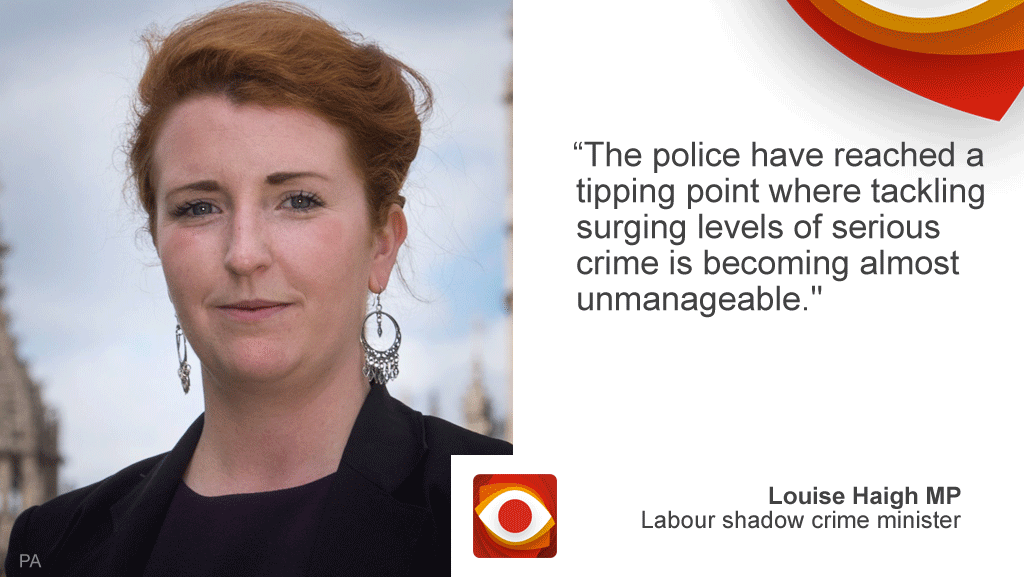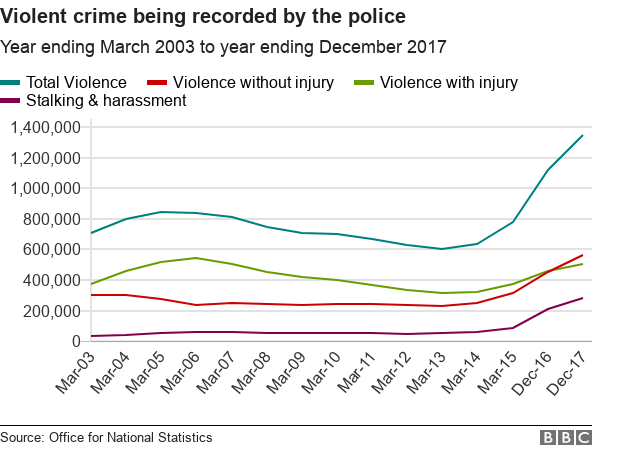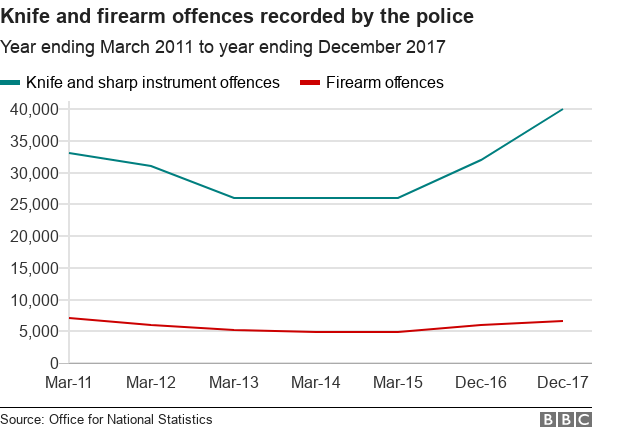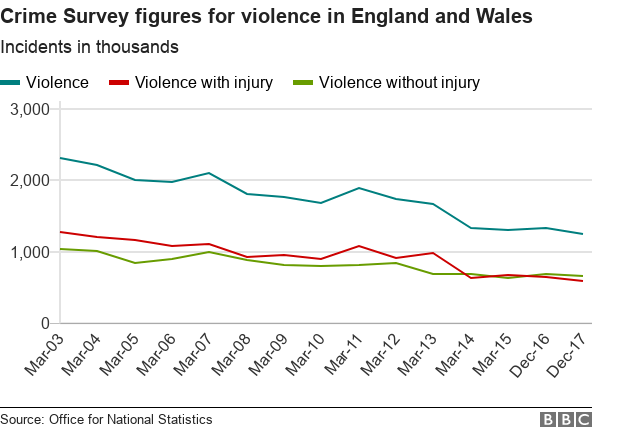Violent crime: Is it getting worse?
- Published

Claim: There has been a surge in serious crime in England and Wales.
Verdict: "High harm" violent crime is genuinely increasing, according to police recorded crime statistics. But the Crime Survey suggests violence overall is falling.

In recent days, several high-profile crimes - including the mugging of comedian Michael McIntyre and the robbery of a TV crew's camera equipment, external in London - have put violent crime back into the spotlight.
Parts of the media have declared that violent crime has turned the country into "Wild West Britain" and one paper asks: "Have we lost control of our streets?"
Meanwhile, Labour's crime spokeswoman, Louise Haigh, says the police are facing "overwhelming demand".
So is violent crime getting worse?
There are two main ways of measuring crime:
Police recorded crime - the number of incidents reported to the police and recorded by individual forces
The Crime Survey - an annual survey that collects people's experience of crime
Police recorded crime
The most recent official statistics, external on police recorded crime show there were 1.3 million violent crimes in England and Wales last year.
That is an increase of 21% compared with 2016, when 1.1 million violent crimes were recorded.
That continues the rising trend in recorded violent crime that has been observed since 2014.

But in its observation, published alongside the crime figures, external, the Office for National Statistics (ONS) says police recorded violence statistics should be treated with caution.
"Ongoing work by police forces over the last three years to improve crime recording practices has been an important driver of the increase in police recorded violence," it says.
"And this makes interpreting trends in police recorded violence difficult."
The crimes "violence without injury" and "stalking and harassment" were responsible for half of the total violence figures.
And both of these categories are often subject to changes in recording methods.
On top of this, victims may have become more willing to report crimes.
All of these factors make it difficult to decipher whether the numbers show a genuine rise in overall violent crime.
However, when it comes to violence categorised as "high harm" - such as murder, knife and gun crime - the ONS says the rise is genuine.
That is because victims of these sort of crimes are much more likely to report them to the police, as opposed to a minor scuffle in a pub.
So what has happened in these "high harm" areas?

Last year, gun crime increased 11% (to 6,604 recorded offences) compared with 2016, and offences involving knives or other sharp instruments rose 22% (to 39,598 recorded offences).
Homicides have increased over the past three years too.
The ONS says the rise in recorded knife and gun offences is also backed up by NHS data on hospital admissions for stabbing and shooting injuries.
The Crime Survey
Turning to the Crime Survey, well that appears to show the opposite trend in violence.

About two in every 100 adults were a victim of a violent crime last year, according to the latest survey.
And that represents no change to the levels of violence people experienced in 2016.
But how can police recorded crime show a dramatic rise when the Crime Survey shows it flatlining?
Well, it comes down to the fact you are still very unlikely to be a victim of a serious violent crime - involving knives or guns, for example.
The Crime Survey collects data from about 35,000 households. And even though that is a hefty sample size, it is still unlikely to include many victims of "high harm" violence.
There is also a time lag of at least a year between carrying out the survey and publishing the results - so the Crime Survey may not reflect the most recent trends.
For obvious reasons, the survey also cannot tell you about people's experience of homicide.
So what does it tell us?
According to the ONS, the Crime Survey provides a better measure of trends in overall violent crime, which includes more common but less harmful crimes - such as pushing and shoving.
Police recorded crime, on the other hand, provides a better indicator about trends in highly violent crimes - but it is less reliable when it comes to overall violence.
That is because victims of scuffles or incidents that result in psychological harm - but no physical injuries - are less likely to report them to the police.
So, if Ms Haigh is referring solely to "high harm violence", her assertion of rising serious crime is correct.
She also says demand on the police is rising - this is backed up by increases we have seen in recorded crime.
But in the context of overall violence - that seems to be falling, at least when it comes to people's experience of crime.

